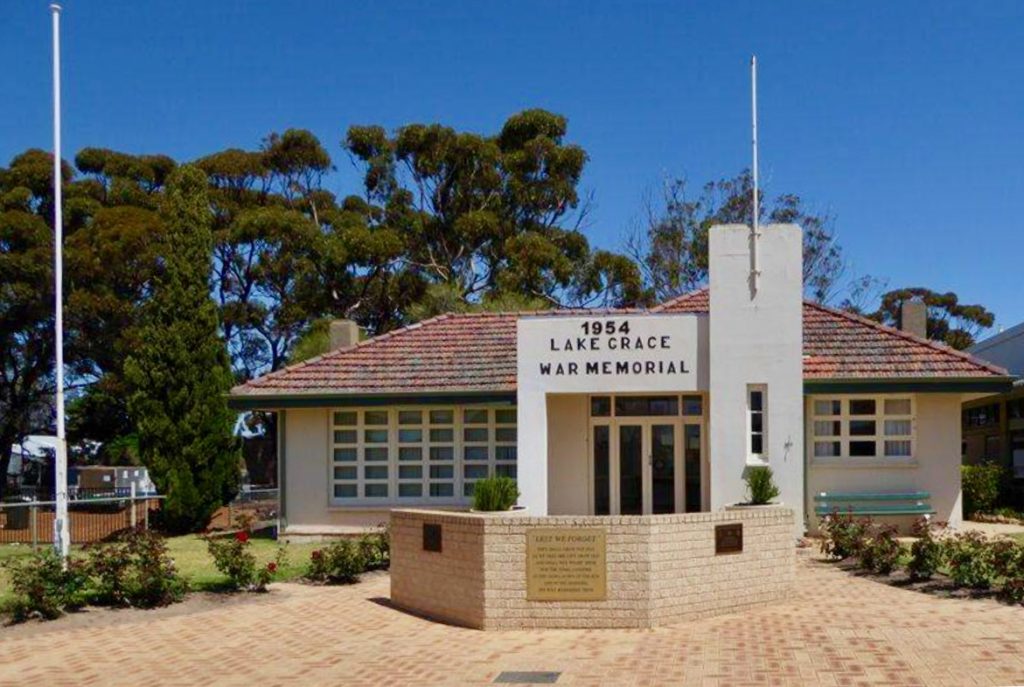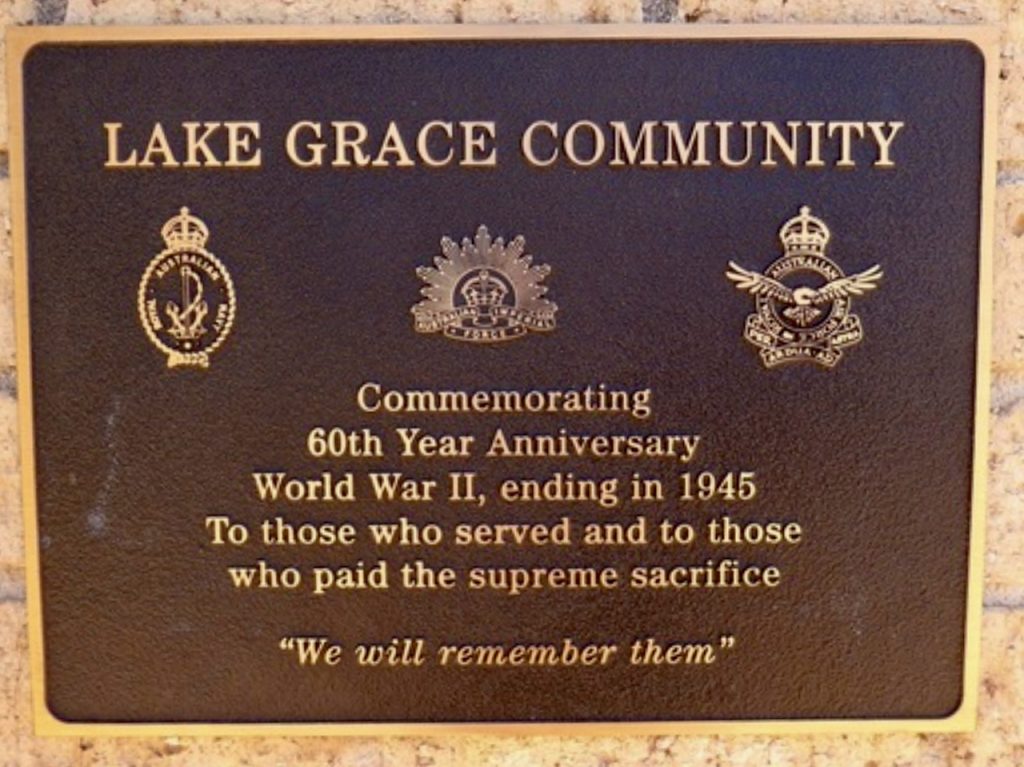
LAKE GRACE WAR MEMORIAL
‘The building commemorates those who have served in the various conflicts in which Australia has been involved. It is on the site of the RSL memorial gardens which were dedicated by Senator Collett on the 23rd July 1938. A lemon scented gum tree at the rear is the only remaining flora from the Memorial Garden.
After World War One the land on this site was granted to the R.S.L. with three trustees; S West, S McKay and A Dewar. The land was eventually cleared and fenced, and later planted as a memorial garden which was dedicated in July 1938.
After World War Two, Lake Grace was enthusiastic about the future and by 1947, plans for the RSL Memorial Building were drawn, and a formal committee under the Presidency of Jack Coad was elected in January 1948. Initially the building was intended to include the Library, Honour Hall, Rest Room and St John Ambulance garage, for a cost of £1250. By 1951, the cost had blown out to £2000, at that time only £99 had been raised. An all out fundraising drive was launched, and an enlarged plan of the building was screened on film nights at the hall. Jack Coad and the Roads Board secretary Bill Colquhoun made a personal canvas of the district, and raised the required £2000 by September 1951. The War Memorial Library was finally opened in August 1955, by Jack Coad, the President of the Memorial Committee.’
Below: From Shire of Lake Grace
‘The Lake Grace War Memorial Library, built in 1954, is situated in the main street of Lake Grace.
After World War One the original site was granted to the RSL with 3 trustees: S West, S McKay and E Dewar. The land was subsequently established as a memorial garden. Many ideas for the site were professed until post World War Two when, in 1947, under the Presidency of Jack Coad, the Memorial Committee developed plans. Initially intended as a library, honour hall, rest room and St John Ambulance garage, the costs blew out and despite an expansive fundraising project, the plan went ahead with the library and honour hall, finally opened in 1955, though it ceased being a library in 1998. A lemon scented gumtree at the rear is the only remaining flora from its use as a memorial garden.
The main entrance leads to a small foyer, with the main hall on the left, and a sub-hall on the right (currently used as storage). Inside the main hall are a myriad of photos and a large fireplace, and connected is a small kitchen.
In 2009 a grant from the Department of Veterans Affairs assisted in the refurbishment of the honour boards and various memorabilia within the building.
The roof had been replaced with tin, the ceiling and cornices replaced and new insulation installed in 2023.’

Below: Lake Gace Honor Roll – Tom PIERSON from 2/4th MGB.

